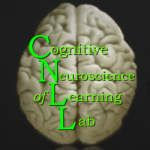task strategies
visuospatial + verbal task strategies

How do different individuals tend to approach a learning task? Are certain strategies better for certain tasks?
Any two different individuals attempting to solve the same problem may employ completely different approaches. Decades of cognitive research have detailed individual differences in domain-specific abilities, and in preferences for using particular task strategies. Neuroimaging research has supported these distinctions by revealing patterns of neural activity that correspond to these individual differences.
The important questions for education then become:
- Is one strategy better than another for a particular learning situation?
- What about those who struggle to use the best strategy for a given topic?
The answers to these questions depend on the context: different situations may call for different approaches. For example, spatial cognition ability has been identified as a key predictor of long-term success in STEM fields (Park, Lubinski, & Benbow, 2007; Wai, Lubinski, & Benbow, 2009; Wai, Lubinski, Benbow, & Steiger, 2010); however, a capacity for language usage has also been shown to be of critical importance for many types of learning – even about visual information (Lupyan, 2016; Lupyan & Clark, 2015; Perry & Lupyan, 2014).
This line of investigation examines how tasks differ in terms of which information is best learned through which task strategies and how individuals differ in terms of which types of cognitive strategies they tend to use. We also examine whether these strategies are flexible and if they can be trained when necessary to improve learning.


